Health and social care standards: my support, my life easy read version
This is about Scotland’s Health and Social Care Standards. It will help people understand how good their care should be.
Easy Read version
Shona Robison is a Member of the Scottish Parliament and her job is to look after health in Scotland. She says:
Everyone should get high quality care and support that meets their needs and choices. This might be in a hospital, a care home, a children’s nursery, or within their own home.
All of us at some point in our lives will use or know someone who uses a health or social care service.
These new Health and Social Care Standards are very important to make sure that everyone in Scotland gets the care and support that is right for them.
June 2017
Readers Note
This is about Scotland’s Health and Social Care Standards. It is short and easy to read. It gives some examples and has some pictures to help people understand what the Standards are. It will help people understand how good their care should be. If you want to see the full Standards, you can find them on the internet at: http://www.gov.scot/Publications/2017/06/1327
What are the new Health and Social Care Standards?
The Health and Social Care Standards say what people’s health, social care and support should be like.
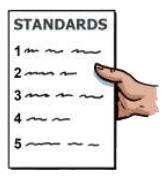
In this booklet, we will call them the Standards for short.
The Standards help make sure people’s human rights are met. Like the right to be treated fairly and respected.

Healthcare is care you get from people like doctors and nurses.

Social care is when you get help and support from staff to do things like:
- live at home (including a care home)
- look after yourself
- go out and do things.

The Standards will also help staff know what to do when supporting and caring for you.

Principles
There are 5 Principles to go with the Standards. These are things that should happen when you get care and support.
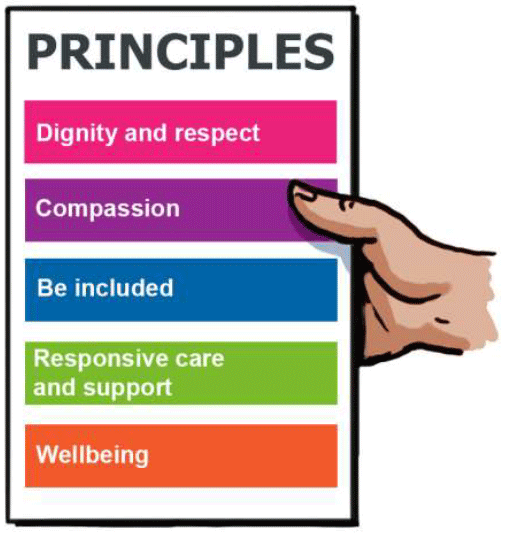
They say that:
1. People should treat you with respect.
2. People should be nice and caring to you.
3. You should have your say on how you are cared for.
4. You should have the right support at the right time.
5. You should get support to feel happy and well.
Standard 1. I get good care and support that is right for me
Here are some examples of how this should happen.
- I am always treated fairly. No one treats me badly.
- Staff care for me so I feel good and safe. It feels right for me.
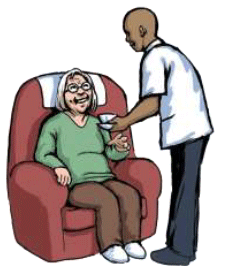
- Staff help me do the best I can. They believe I can do things.
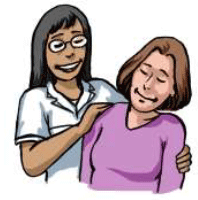
- Staff listen to me because I know what I want and need.
- I have a big say in the care and support I get, to make sure it is right for me.
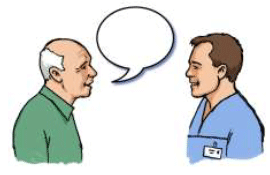
- If I can’t get the care and support I want, staff tell me why.
They help me find other care and support if I need it or if things change.
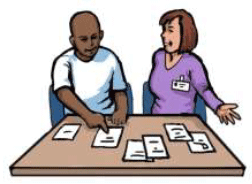
- I can live in my own home if possible.
- I can get things to help me look after myself such as equipment and technology.
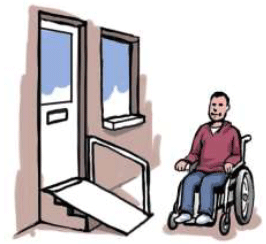
- Staff help me get the health and social care and support I need.
- I get support to make good choices that make me healthy and happy.
- I get help to prepare and cook my own drinks and meals, where possible.

- I get support to be part of my local area and join in with what is happening.
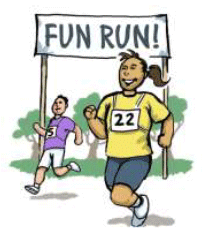
- I can get support to learn and go to work.

If I am under 16 years old
- I can learn and play with other children.
- I can choose my own play activities.
- I can learn and play outdoors and explore nature.
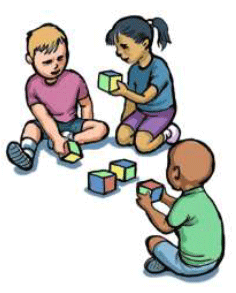
Standard 2. I am involved in my care and support
Here are some examples of what should happen.
- I get support to decide the care and support that is right for me.
- I get information and advice that is easy for me to understand.
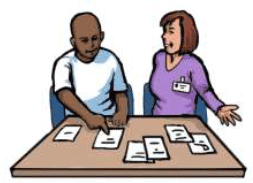
- I can get support to speak up from someone called an advocate if I need it.
- I can tell people what I need and want in a way that feels right for me.

- People speak to me in a way I can understand and do not try to rush me.
- I can choose who gives me care and support and I get to choose what it will be like if possible.
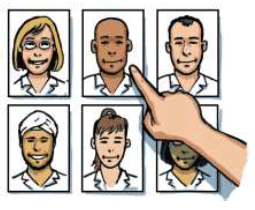
- If I can’t tell staff what I want, they ask the other people who know me well about what I want.
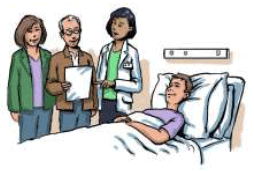
I can choose:
- How to spend my money.
- What to wear.
- Who I spend time with.
- How I spend my time each day.

- I get support to do things that make me happy and confident, even if it might be a bit risky.
- I get support to understand why my care and support may need to change and why.

Standard 3. I trust the people who support and care for me
Here are some examples of what should happen.
- If I get care and support where I live, people respect this because it is my home.

- Staff talk to me and listen to me. They get to know me and what I want and like.
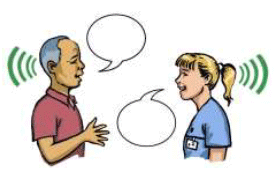
- Staff are kind and caring to me and I feel comfortable and safe with them around.
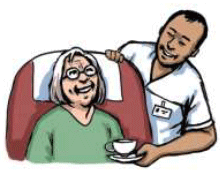
- Staff have the right skills and training to help me.
- Staff have enough time to spend with me.
- Staff get on well with each other and work together as a good team.
- I can get help quickly if I need it.
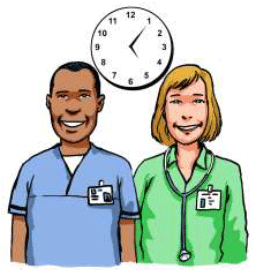
- Staff help me feel secure where I live and protect me if I need it.

- Staff want to get to know me. They talk to me and ask me questions about what I want and like.
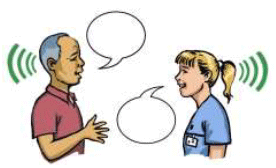
Standard 4. I trust the organisation I get care and support from
Here are some examples of what should happen.
- The organisation will protect and uphold my human rights.

- The organisation says sorry if something goes wrong. They will try to make things better for me.
- I can have a say in how to make the care and support better for everyone.
- I can say if I am unhappy about something. I will be treated fairly if this happens.
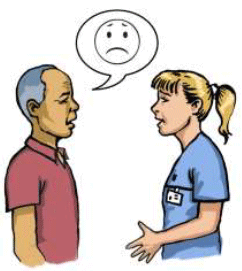
- I feel that the organisation is good and works well.
- I can give my ideas. I can say how the organisation can support me better.
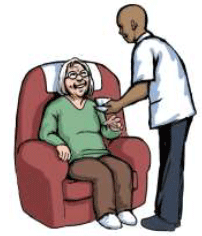
- I know the staff who care for me.
- Organisations that care for me and support me work well together.
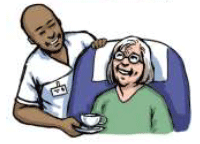
Standard 5. If I go to a service in a building, it is high quality
For example, you may live in a care home or go to a day centre
Here are some examples of what should happen.
- The building is clean, nice and safe.
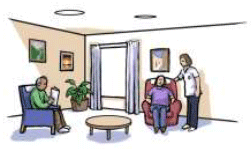
- Staff tell me if there are cameras in the building and how I can still be private.
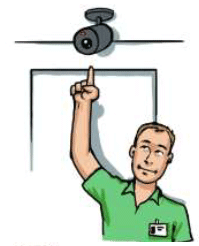
- If I am cared for overnight I can use things like a television, radio, phone and the internet.
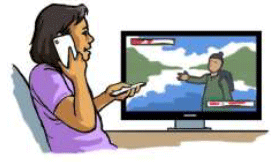
- It is easy for me to use all parts of the building I need to.
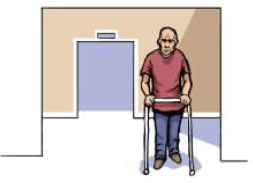
- I can take part in things to do, in the building and outside.
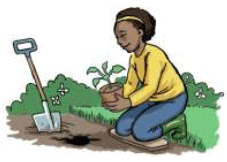
- The building is near to my home, where possible.
- The building is part of the local community and does not make me feel isolated or too far away.
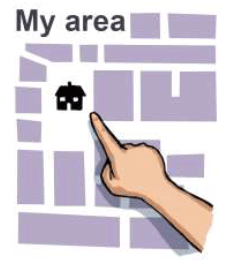
- I can share my room with someone if I want to, and it is safe.
- Staff help me decide about this.
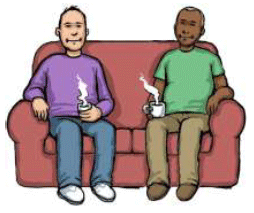
- My pet can live with me in my care home if possible.

Contact
There is a problem
Thanks for your feedback